When it comes to cooking, having the right equipment can make all the difference. One thing I hear repeatedly is the confusion over which piece of cookware is for what function. While sauté pans, fry pans, and skillets may seem interchangeable, each has unique characteristics that make it suitable for specific cooking tasks. As someone who enjoys cooking, I have found that understanding a saute pan vs fry pan can help me achieve better results in the kitchen.
How are They Different?
Let’s start by simplifying one thing. Although traditionally skillets and fry pans had subtle differences, in today’s market they are essentially the same and the manufacturers use the terms interchangeably. While they may look similar, there are some key differences between fry pans and saute pans that can affect the way you cook. Here’s a breakdown of how they differ:
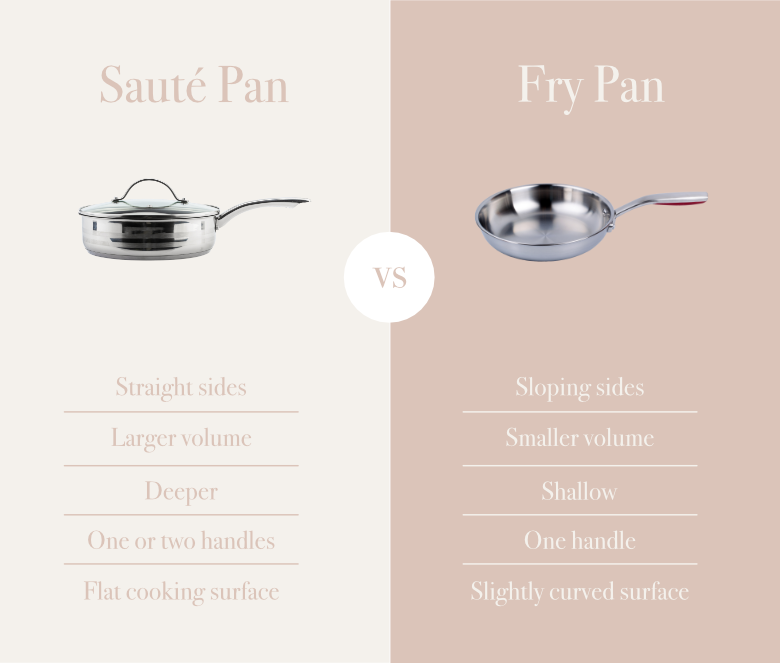
Shape and Size
One of the most noticeable differences between these pans is their shape. Skillets and fry pans have sloping sides that gradually flare outwards from the bottom of the pan, while sauté pans have straight sides that go up from the bottom of the pan. This means that sauté pans have a larger surface area than skillets and fry pans of the same diameter, which can make them better suited for tasks like searing meat or reducing a pan sauce.
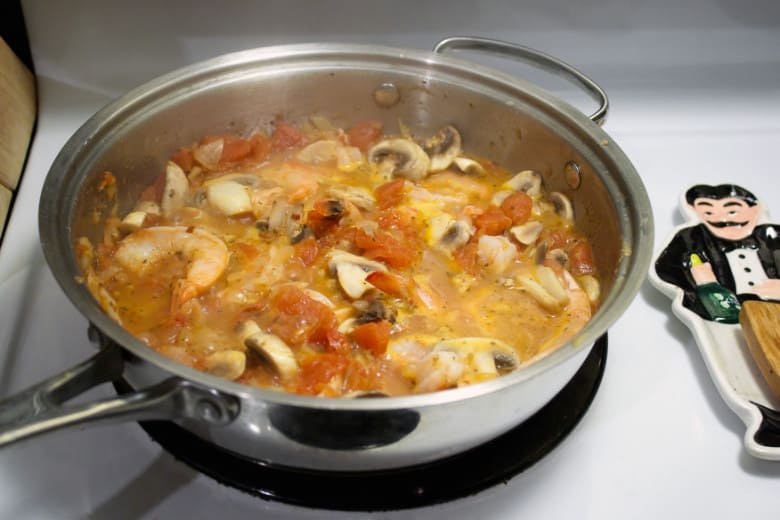
Skillets and fry pans are typically wider than sauté pans, which can make them better suited for cooking foods that require more space to move around, like pancakes or stir-fries. However, the sloping sides of skillets and fry pans can also make them less ideal for cooking foods in liquids, as the liquids can easily spill over the sides of the pan.
Depth and Capacity
Another key difference between these pans is their depth and capacity. Skillets and fry pans are typically not as deep as sauté pans, which can make them better suited for tasks like shallow frying or searing foods that don’t require a lot of liquid. Sauté pans, on the other hand, are deeper and have a larger capacity, which can make them better suited for cooking foods that require more liquid, like stews or braises, and of course, sauteing.
It’s important to note that the depth and capacity of these pans can vary depending on their size and specific design. For example, some skillets may be deeper than others, and some sauté pans may be wider than others.
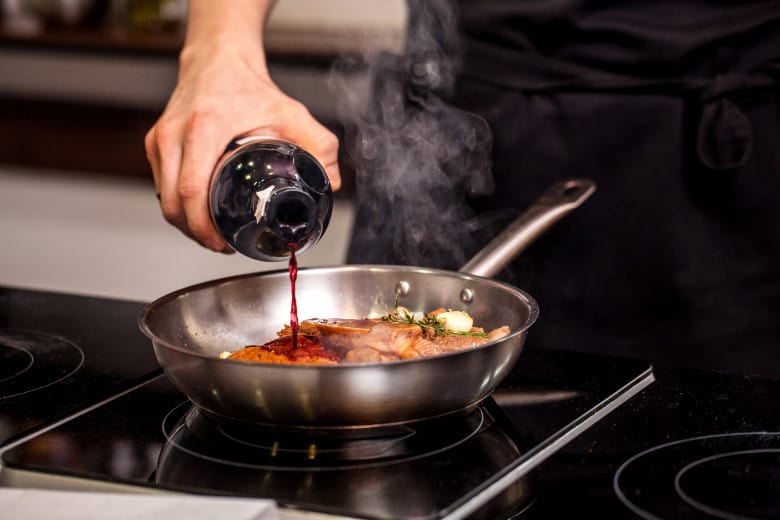
Handles
The handles on these pans can also differ. Skillets and fry pans typically have one long handle, while sauté pans may have two handles, one long and one short, to make them easier to lift and move around. Most sauté pans also come with a lid, which can make them more versatile for cooking a wider range of dishes.
Overall, while these pans may seem similar at first glance, their differences in shape, size, depth, and handles can make them better suited for different cooking tasks. By understanding these differences, you can choose the right pan for the job and elevate your cooking game.
In the section below, I’ve rounded up the best saute and fry pans to help you make an informed decision. Whether you’re a beginner or a seasoned chef, you’ll find the perfect pan for your cooking needs.
Saute Pans
HexClad 7-Quart Hybrid Stainless Steel Deep Sauté Pan Fryer with Lid
If you’re looking for a quality, versatile sauté pan that can handle all your cooking needs, the HexClad 7-Quart Hybrid Stainless Steel Deep Sauté Pan Fryer with Lid is a great option. With its unique hexagonal design and tri-ply construction, this sauté pan offers excellent heat distribution and a non-stick surface that’s easy to clean. It’s also compatible with all types of cooktops and oven-safe up to 500°F.
Whether you’re sautéing vegetables, deep frying, or braising beef, this Hexclad sauté pan will provide excellent performance. While the price point may be higher than some other options on the market, the quality and durability of this sauté pan make it a worthwhile investment for any home cook.
Pros
Cons
Cuisinart 733-30H Classic Stainless 5-1/2-Quart Sauté Pan with Helper Handle and Cover
The Cuisinart 733-30H Classic Stainless 5-1/2-Quart Sauté Pan with Helper Handle and Cover is a classic choice for any home cook who wants a durable and reliable sauté pan. With its stainless steel construction and aluminum encapsulated base, this sauté pan provides excellent heat distribution and durability. If you want a solid, durable saute pan you can never go wrong with stainless steel. If properly cared for, this pan will last many years, and it’s priced right.
Pros
Cons
All-Clad D3 3-Ply Stainless Steel Sauté Pan with Lid
Anyone who’s a serious cook knows the name, All-Clad. If you’re looking for a versatile saute pan, the All-Clad D3 3-Ply Stainless Steel Saute Pan with Lid is a great choice. It’s perfect for searing, with straight sides to hold in liquid and prevent splattering, and a lid to lock in moisture.
The All-Clad Saute Pan is a great addition to any kitchen. The tri-ply construction heats up quickly and evenly, making cooking a breeze. The straight sides of the pan make it easy to stir and toss ingredients without making a mess. The included lid is a great feature, helping to lock in moisture and flavor while cooking.
One downside to this saute pan is it’s on the pricier side compared to other saute pans on the market. It’s priced competitively with the flashier Hexclad pan but will last a lot longer (than any nonstick pan for that matter).
Pros
Cons
Fry Pans
Blue Diamond Cookware Diamond-Infused Ceramic Nonstick 10-Inch Frying Pan
The Blue Diamond Cookware Diamond Infused Ceramic Nonstick 10-Inch Frying Pan is a budget-friendly pan designed for everyday cooking. The pan is constructed with a diamond-infused ceramic nonstick coating that ensures durability and nonstick performance. It features a forged base for even heat distribution and an ergonomic stainless steel handle that stays cool to the touch during cooking. This pan is very inexpensive. Nonstick coatings don’t last forever. Some cooks prefer to buy cheaper pans with the understanding that they will need to be replaced frequently. There is some logic to this way of thinking, although I wouldn’t call it environmentally friendly.
Pros
Cons
OXO Good Grips 8″ 10″ and 12″ Frying Pan Skillet Set
The OXO Good Grips Frying Pan Skillet Set includes three skillets with sizes of 8 inches, 10 inches, and 12 inches. These pans are made of hard-anodized aluminum, which provides durability and excellent heat conductivity and makes a great starter set. They are coated with a three-layer nonstick coating, which ensures easy food release and cleaning. The stay-cool stainless steel handles are securely attached with stainless steel rivets, providing a comfortable grip while cooking but do limit their oven rating to only 390°F.
Pros
Cons
Made In Cookware – 10-Inch Stainless Steel Frying Pan With Lid
The Made In Cookware 10-Inch Stainless Steel Frying Pan With Lid is a high-quality frying pan designed for home cooks who demand the best. This pan is constructed with 5-ply stainless clad and is a professional-grade product. The pan comes with a stainless steel lid that locks in moisture and prevents splatter while cooking. It is suitable for all stovetops, including induction, and can be used in the oven up to a whopping 800°F. It’s not cheap but it might be the last frying pan you ever buy!
Pros
Cons
Related: Our Cookware Buying Guide. How To Find Your Perfect Set.
Buying Guide
When it comes to choosing between a saute pan and a fry pan, there are a few things to consider. Both pans are versatile and can be used for a variety of cooking tasks, but there are some key differences to keep in mind. Here are some features to consider:
| Feature | Saute Pan | Fry Pan |
| Shape | Straight sides | Sloping sides |
| Size | Usually larger | Usually smaller |
| Depth | Deeper | Shallow |
| Handles | Usually two | Usually one |
| Cooking Surface | Flat | Slightly curved |
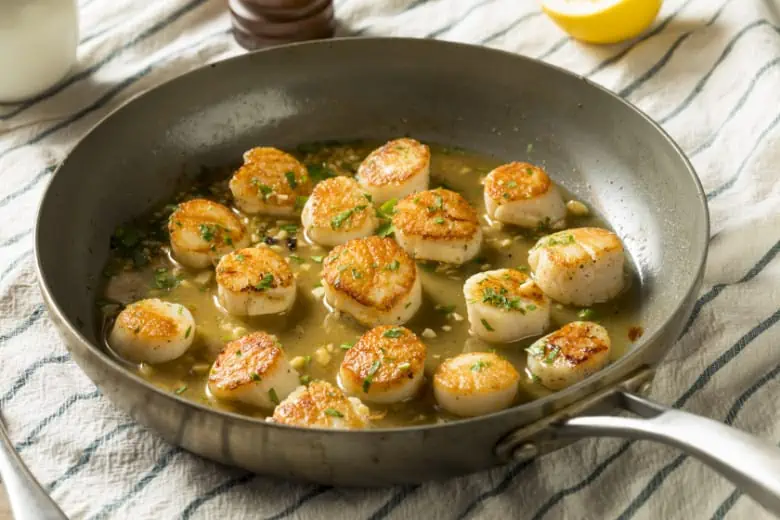
Material
The material of the pan affects its performance and durability. Here are some common options:
Stainless Steel
Durable and easy to clean, but not the best heat conductor. Often used in combination with an aluminum or copper core for better heat distribution.
Aluminum
Excellent heat conductor but not as durable as stainless steel. Can be anodized to create a harder, non-stick surface.
Copper
The best heat conductor, but also the most expensive. Often used in combination with stainless steel for better durability.
Cast iron
Retains heat well and can be used on any heat source, including the oven and grill. Requires seasoning to prevent sticking. Many professional chefs feel cast iron skillets are a “must have” in any kitchen.
Carbon Steel
Similar to cast iron but lighter. Also, requires seasoning for nonstick capabilities.
Size
Consider the size of the pan you need based on the number of people you usually cook for. A 10-inch pan is suitable for most households, but you may need a 12-inch skillet if you frequently cook for larger groups.
Coatings
Some pans come with non-stick coatings to prevent food from sticking. Here are some common choices:
PTFE (Teflon)
The most popular non-stick coating, but it can scratch easily and release toxic fumes at high temperatures.
Ceramic
A safer and more environmentally friendly option, but not as durable as PTFE.
Seasoning
Cast iron and carbon steel pans require seasoning to create a natural non-stick surface.
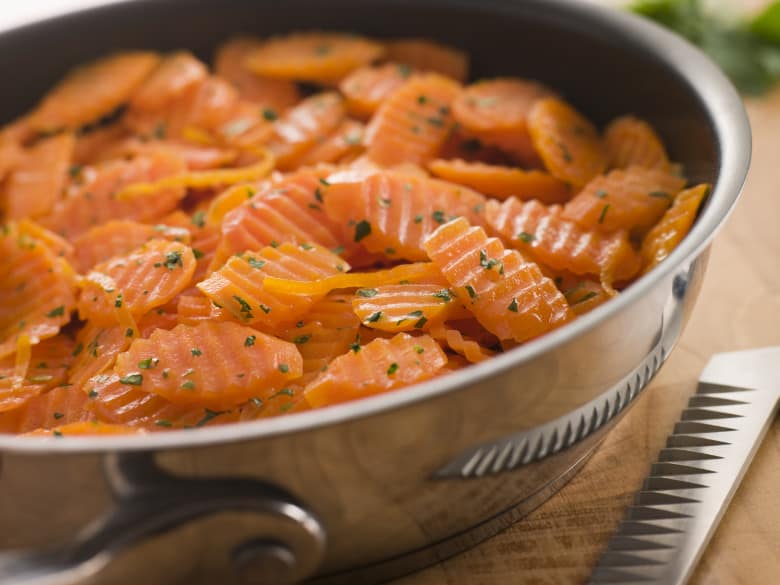
Features
Consider any additional features that may be useful for your cooking needs, such as:
Oven-safe Temperature Rating
Some pans are oven-safe up to a certain temperature, allowing you to transfer them directly from the stovetop to the oven. Higher temperatures allow broiler use.
Dishwasher-safe
Some pans are dishwasher-safe, making them easier to clean. Despite manufacturer claims, I never recommend using a dishwasher with nonstick cookware.
Lid
Some pans come with lids to trap heat and moisture, which is useful for cooking stews and other dishes that require simmering.
Handles
Handles with “stay cool” coatings prevent burns and are comfortable to use but will limit oven use due to lower oven temperature limits
Pricing
Prices for fry pans and sauté pans can vary widely depending on the material, size, brand, and features. Generally, you can expect to pay more for pans made from higher-quality materials and those with additional features like non-stick coatings and lids.
Conclusion
Choosing the right fry pan or sauté pan requires careful consideration. With so many options available, it’s important to prioritize your cooking needs and budget to find the best option for you. Whether you prefer stainless steel, aluminum, copper, or cast iron, there is a pan out there that will help you achieve delicious and effortless cooking. My personal favs are the Made In Cookware 10-Inch Stainless Steel Frying Pan With Lid and the Cuisinart 733-30H Classic Stainless 5-1/2-Quart Sauté Pan.






